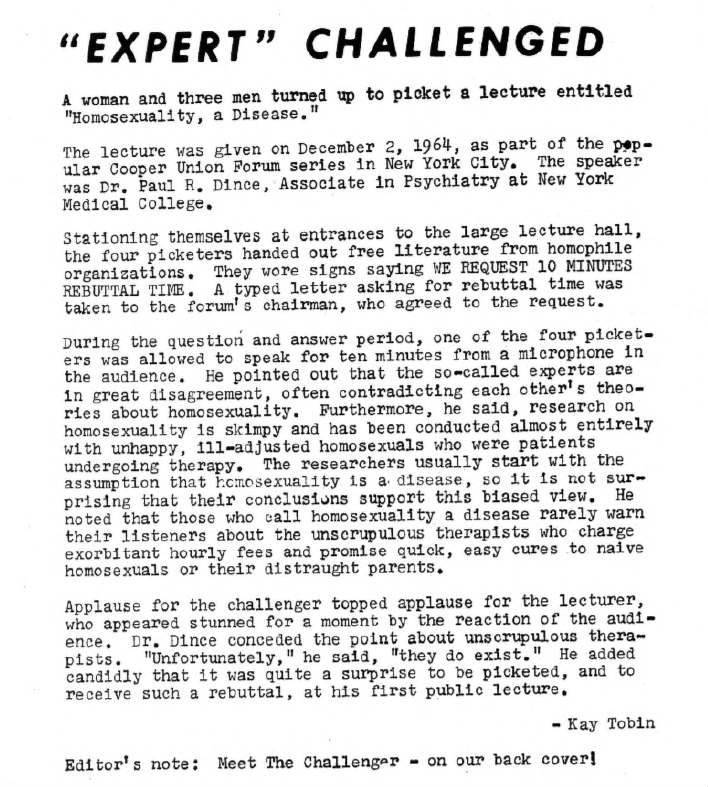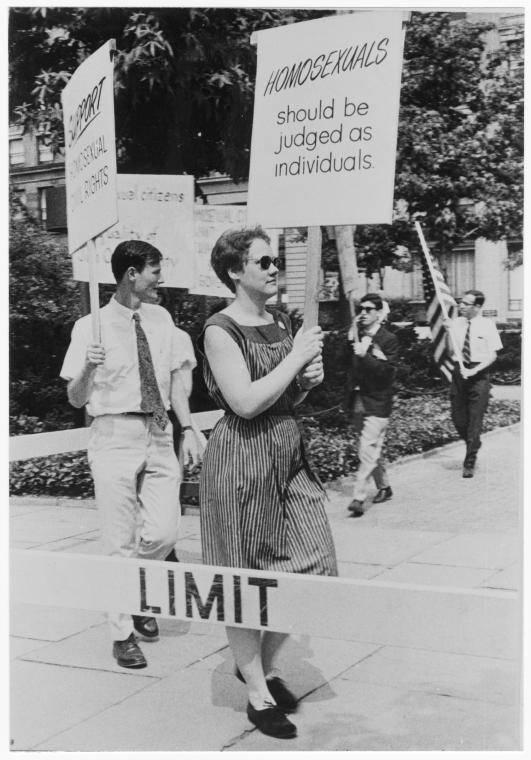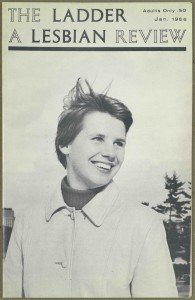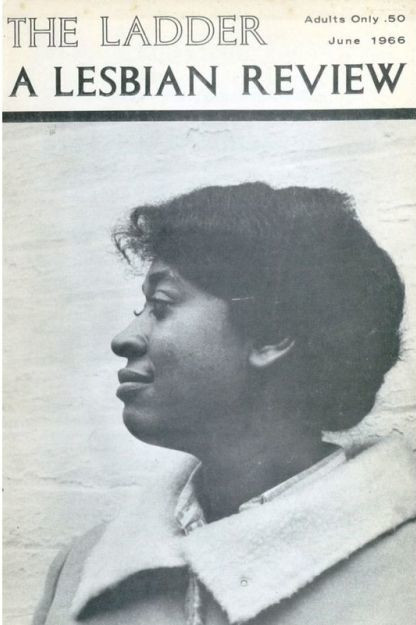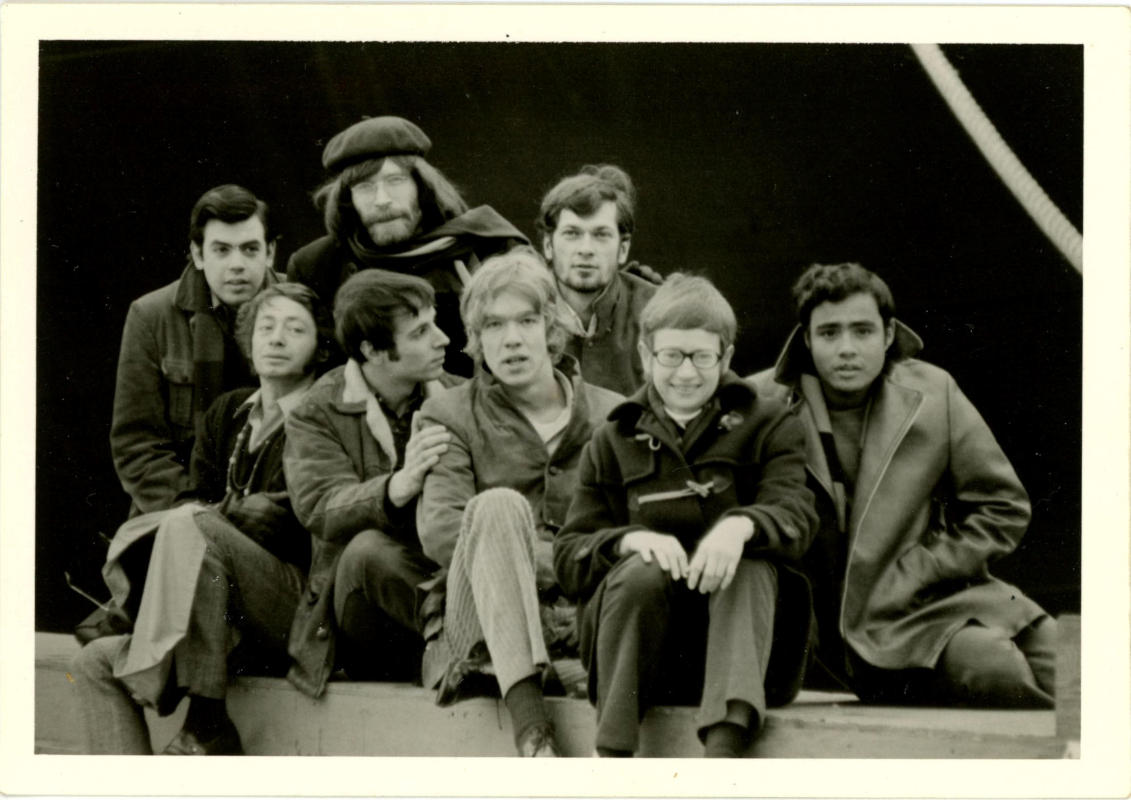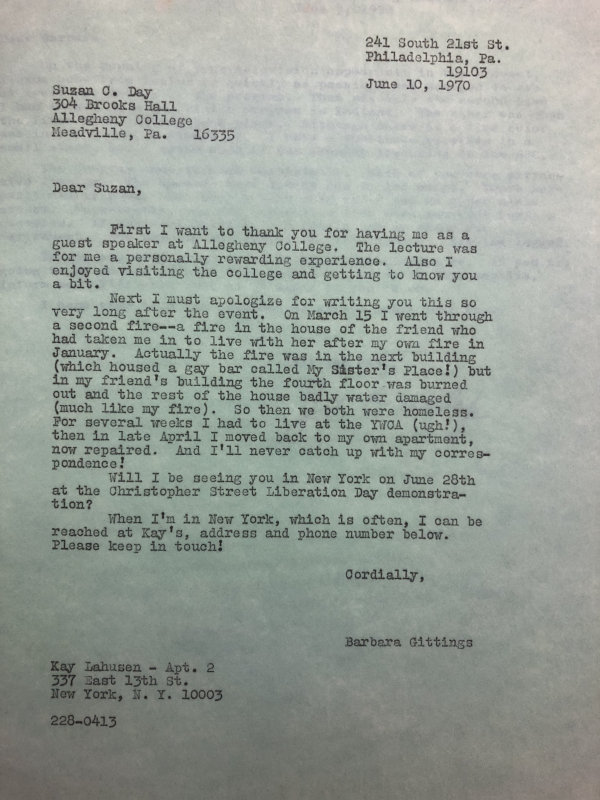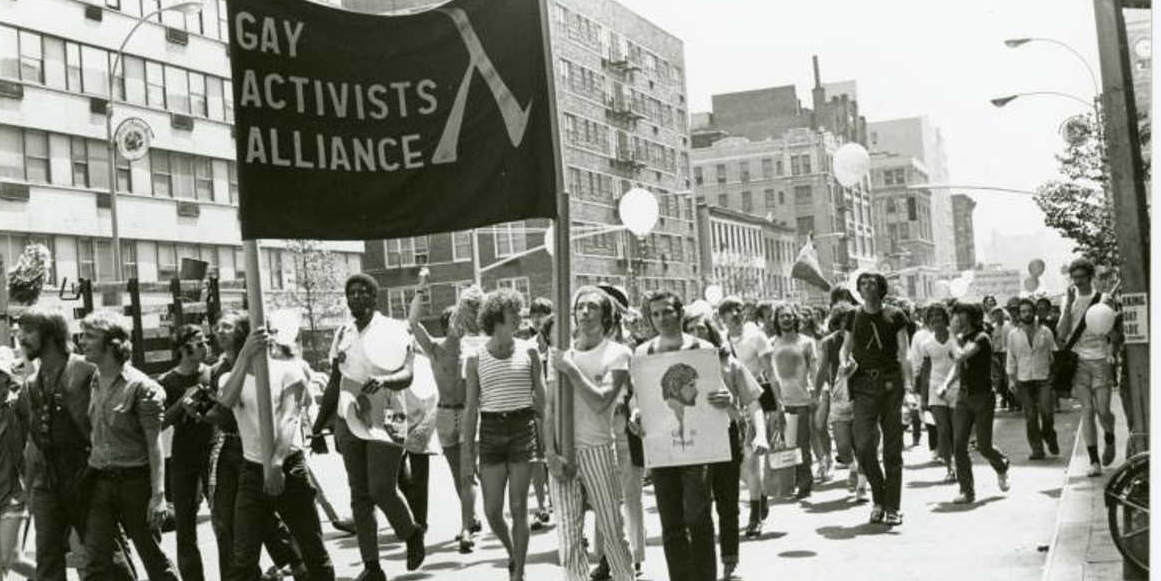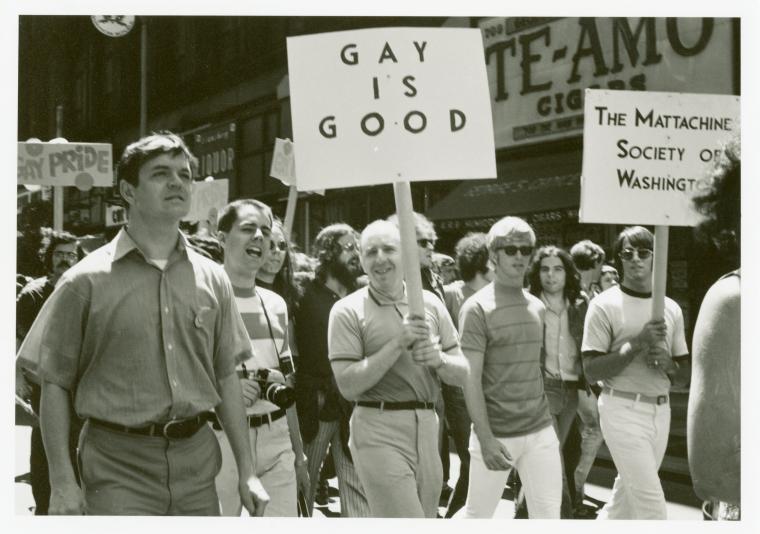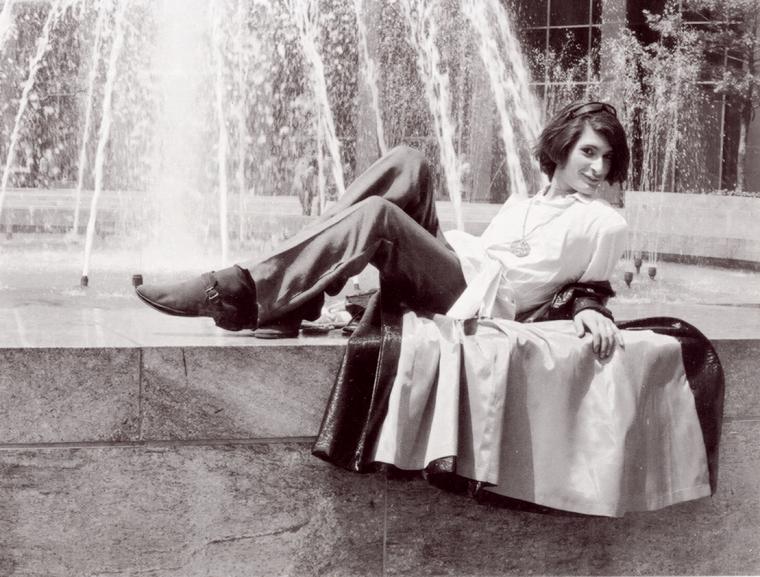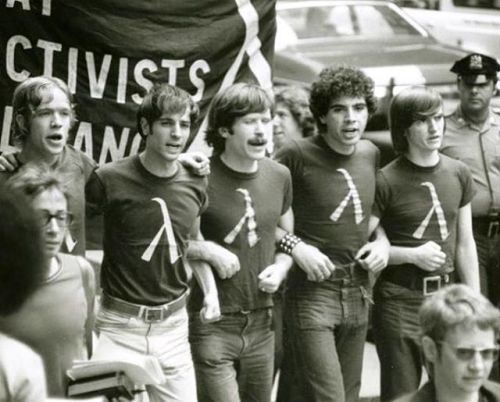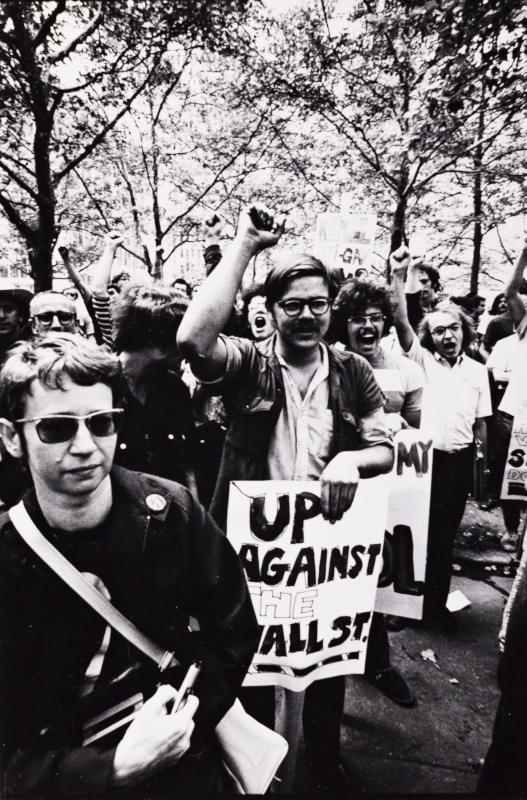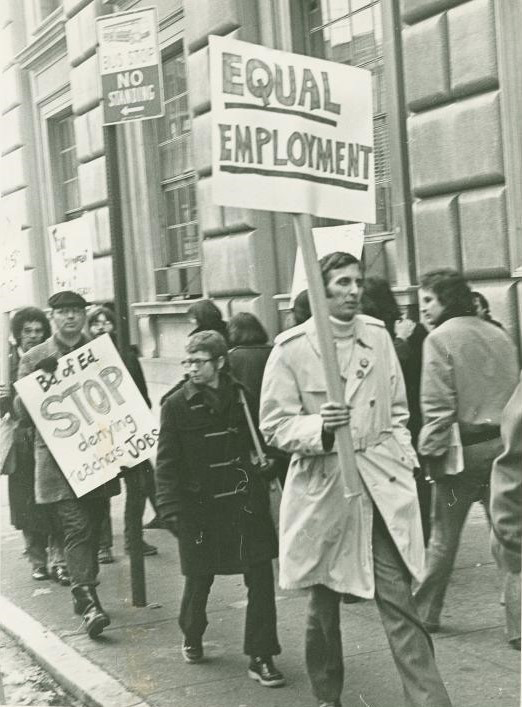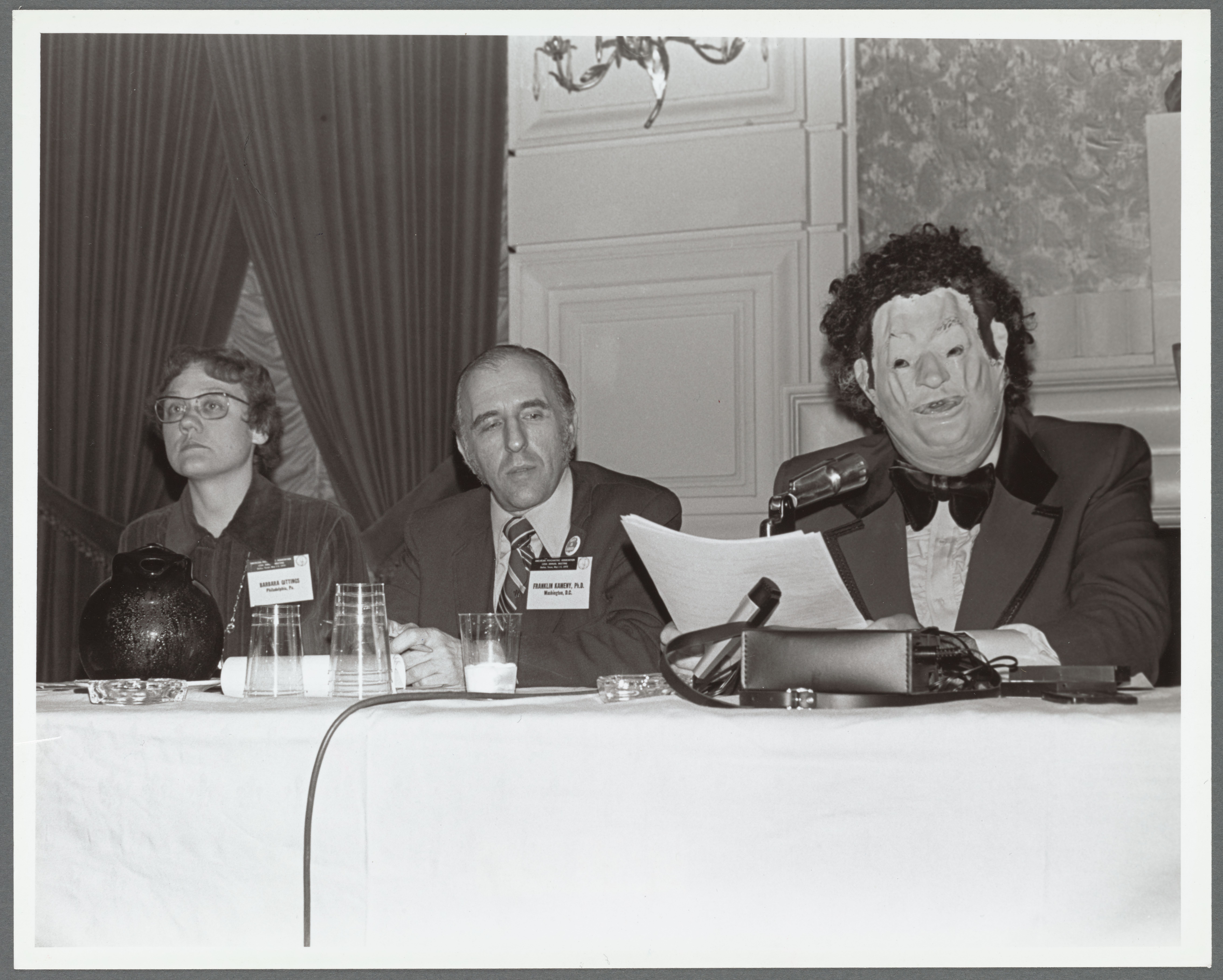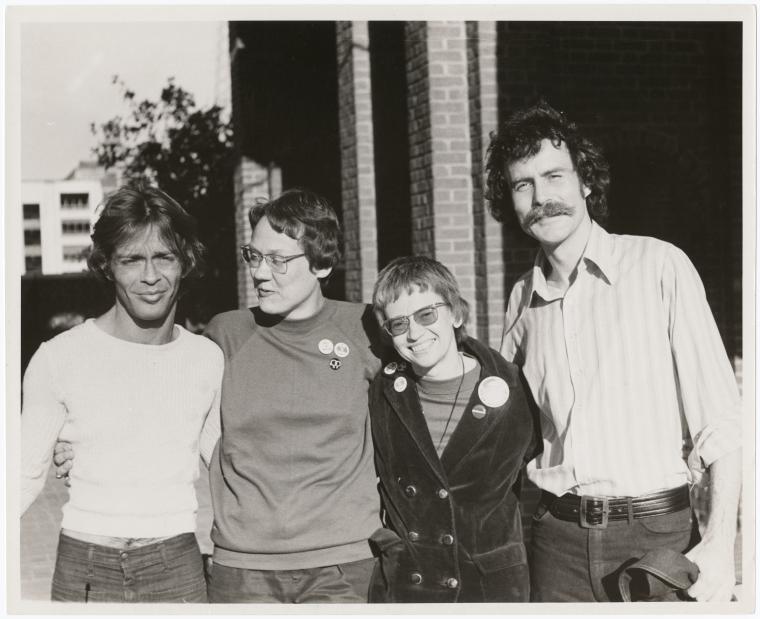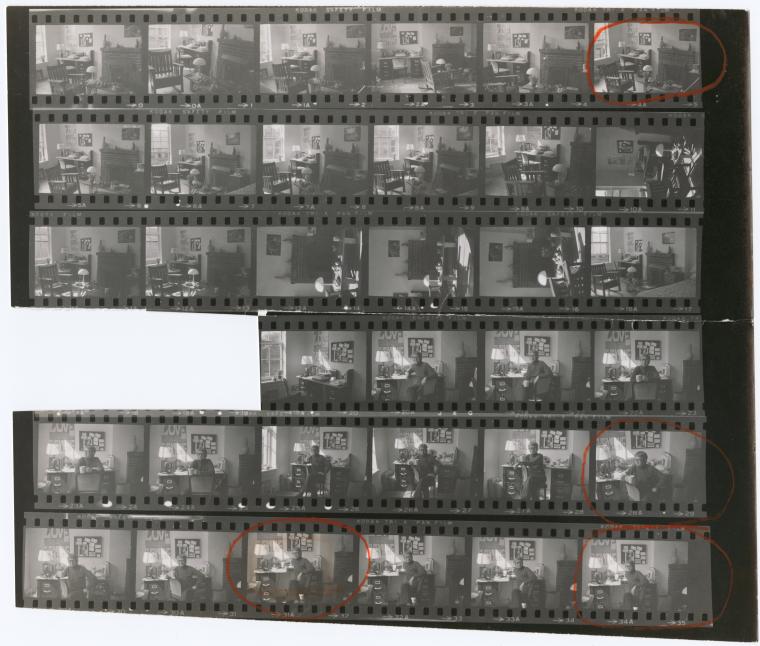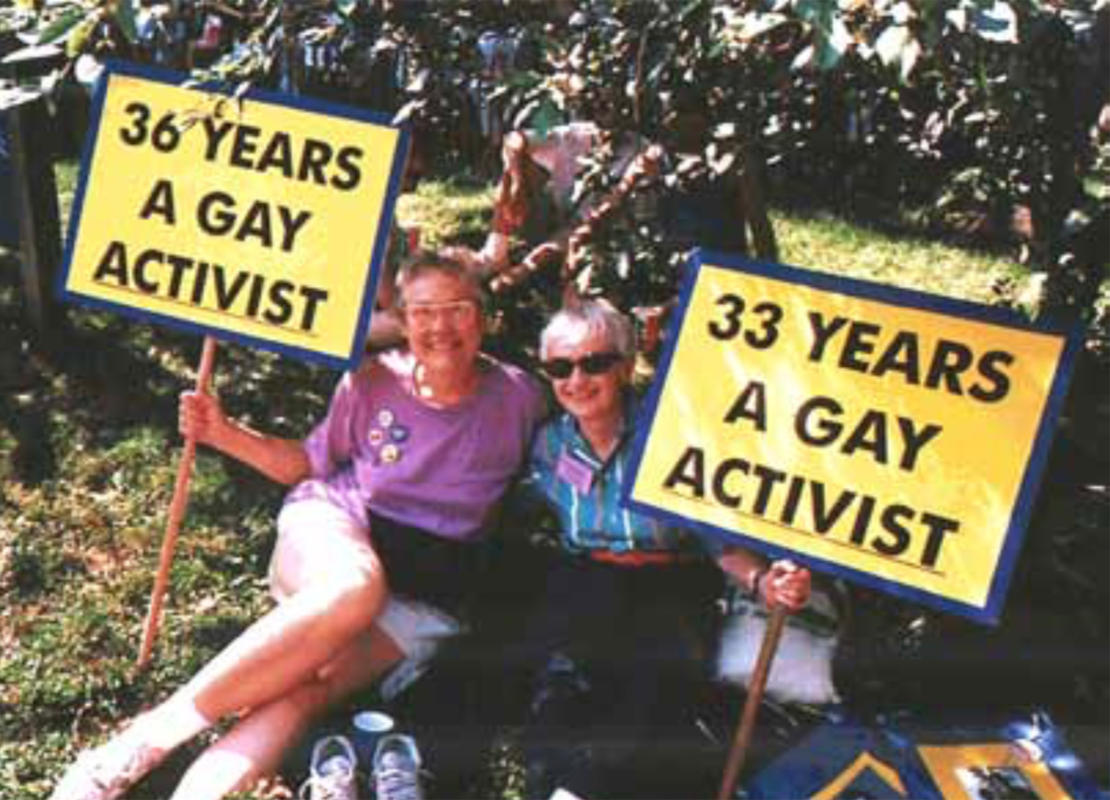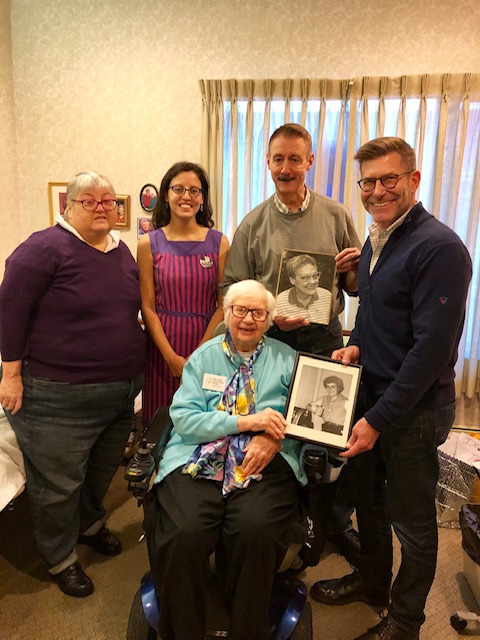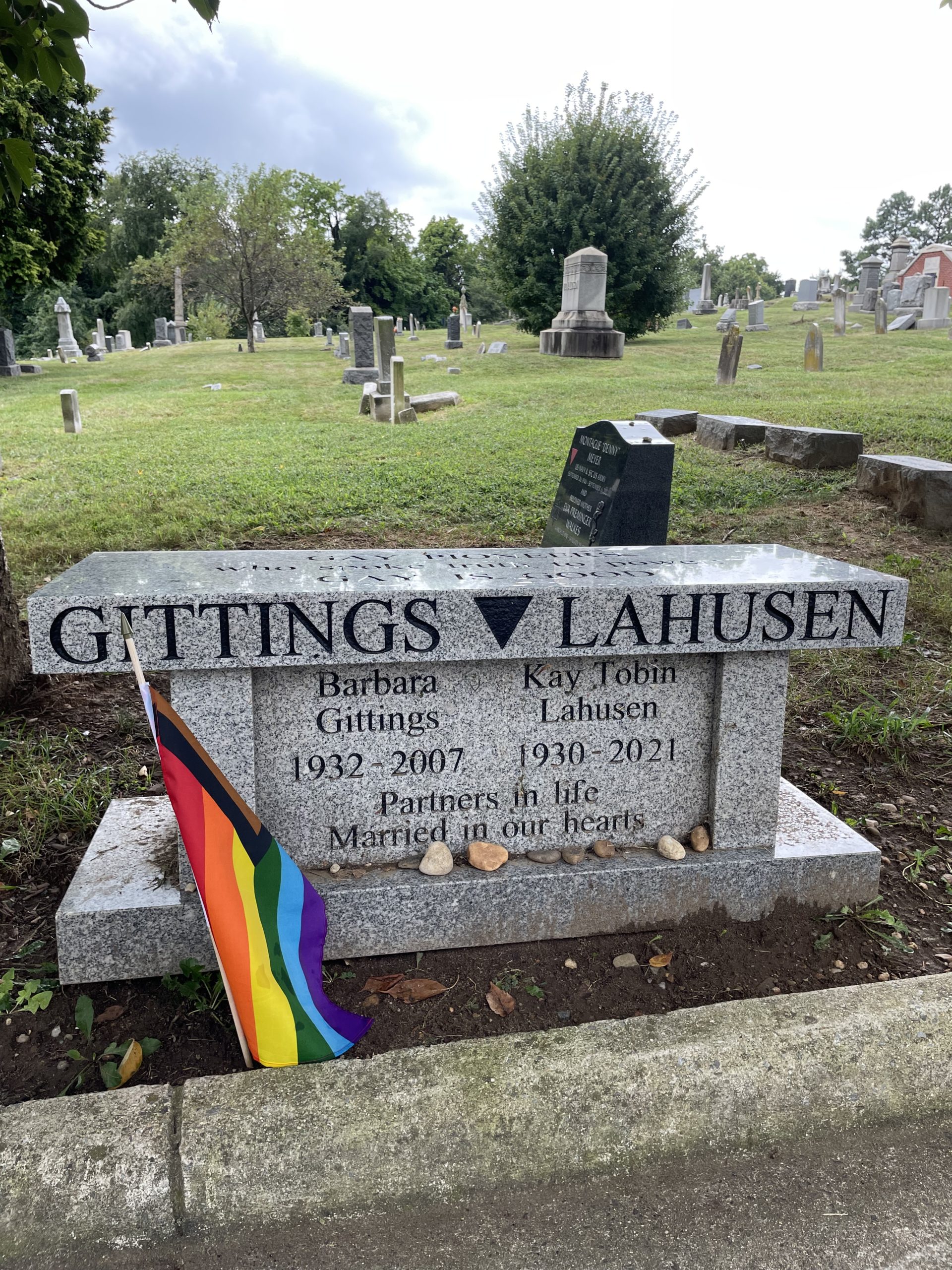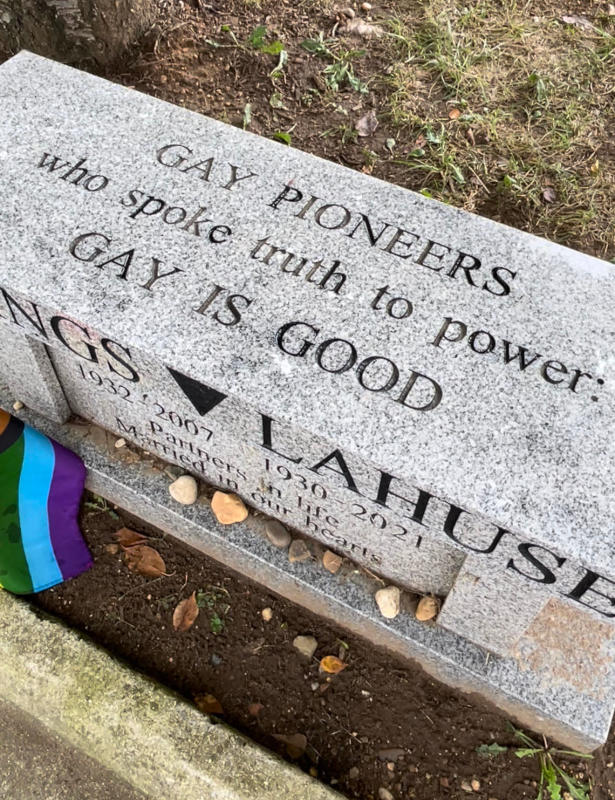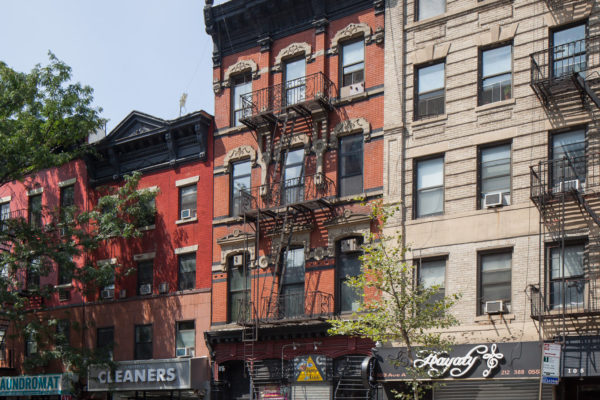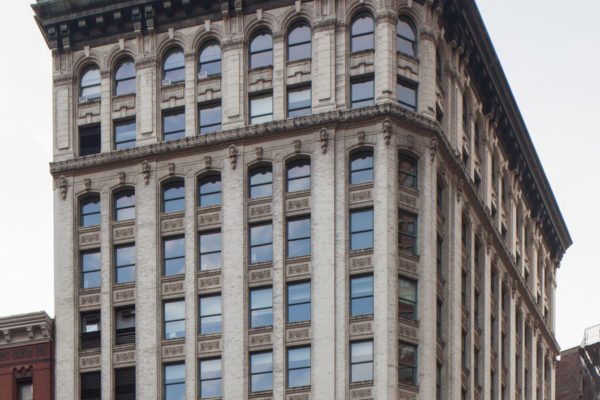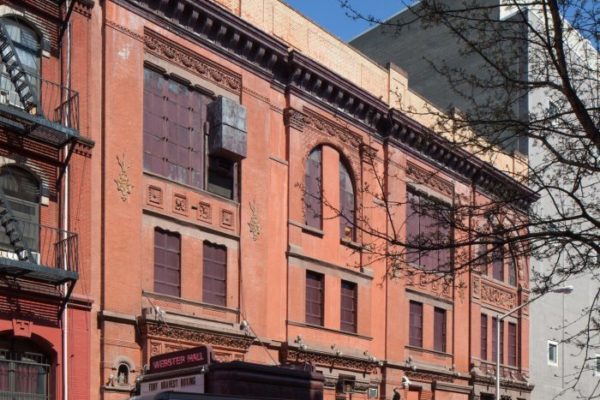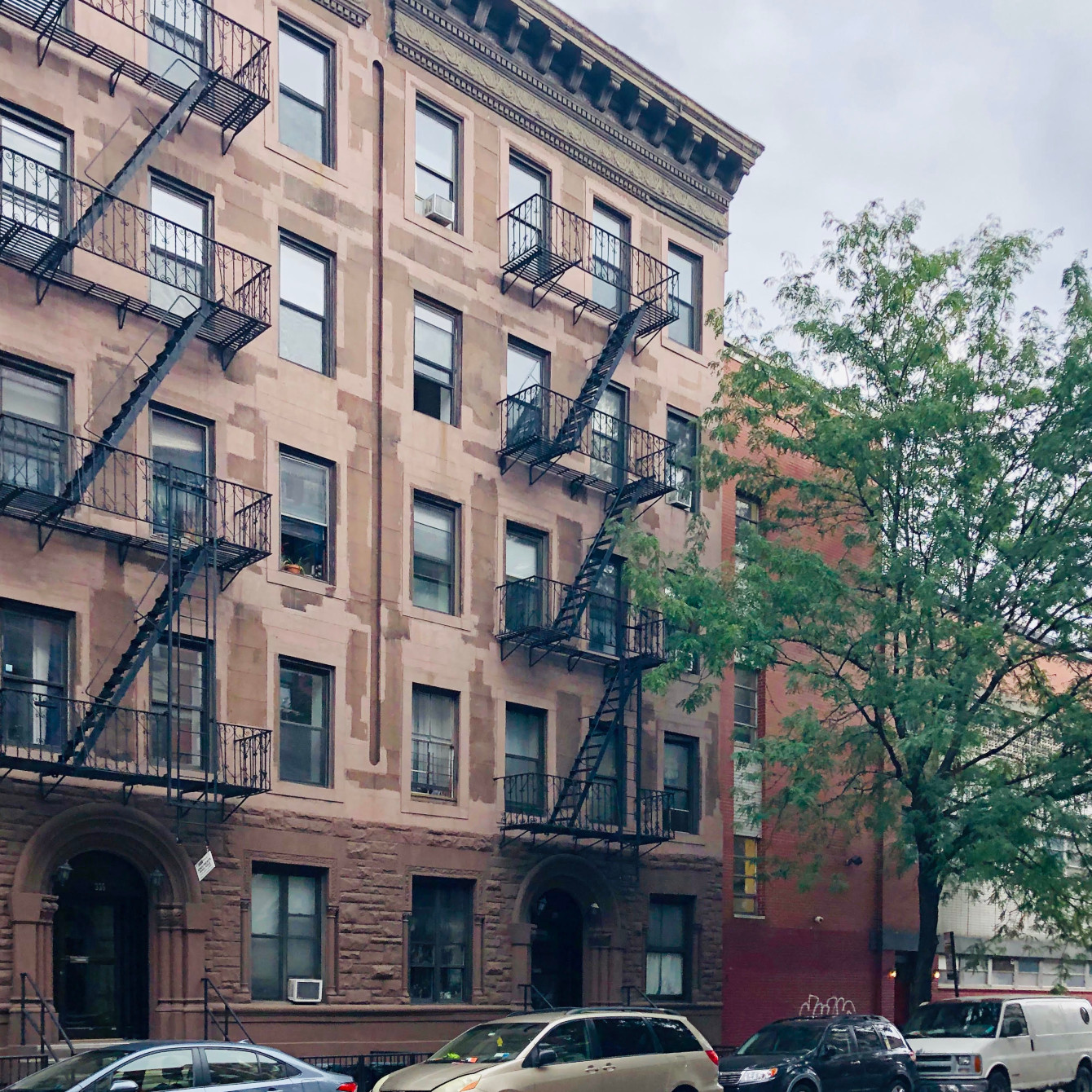
Kay Tobin Lahusen Residence
overview
From 1967 to 1973, early gay rights pioneer Kay “Tobin” Lahusen lived in apartment 2 on the first floor of this East Village tenement, where her life partner Barbara Gittings, a leading gay rights strategist, often stayed on trips to New York City.
During this period, when the LGBT rights movement became more radical following the 1969 Stonewall uprising, Lahusen remained at the forefront by co-founding the Gay Activists Alliance, authoring The Gay Crusaders, and continuing her role as one of the most important photo documentarians of LGBT activism and life.
On the Map
VIEW The Full MapHistory
Kay Lahusen (also known by her pseudonym, Kay Tobin; 1930-2021) was one of the most significant gay rights activists to bridge the pre- and post-Stonewall LGBT rights movement. Around 1960, while working for The Christian Science Monitor in Boston, she made an appointment with New York City psychiatrist Richard C. Robertiello, author of the homophobic book Voyage from Lesbos: The Psychoanalysis of a Female Homosexual (1959), solely to ask him where to meet other lesbians. He told her about the Daughters of Bilitis (DOB), a homophile group formed in California in 1955, and that it had a New York office. Lahusen went to a meeting attended by only a handful of women “because in those days,” she recalled to Marc Stein in a 1993 interview, “there were like 200 people in the [gay rights] movement nationwide.” She was also involved with the Mattachine Society of New York.
In 1961, Lahusen met Barbara Gittings (1932-2007) at a DOB picnic in Rhode Island. Gittings, who co-founded the New York chapter in 1958 and served as its first president, became Lahusen’s life partner. Beginning in 1965, Gittings was one of the nation’s leading gay rights strategists alongside Frank Kameny. Lahusen and Gittings shared a series of residences in Philadelphia until shortly before Gittings’s death 46 years later.
Their early years as gay rights activists, however, were spent taking trips to New York City, then the center of the LGBT rights movement on the East Coast. In 1964, Lahusen took part in a picket at Cooper Union, the second-ever gay rights protest in the United States, and covered it in The Ladder (1956-1972), DOB’s national monthly magazine. Gittings, as editor from 1963 to 1966, had made the magazine more political, including replacing line drawings on its front cover with photos of lesbians in May 1964. From September of that year until 1966, these were taken by Lahusen, including one of Lilli Vincenz, the first to feature a named model facing the camera without sunglasses, and another of East Village resident Ernestine Eckstein, the first to feature an American lesbian of color. Lahusen and Gittings drove to New York once a month to distribute copies of The Ladder because distributors refused to do so, but only two places would carry them: a newsstand in a building at 8th Street and Sixth Avenue and a general bookstore on 8th Street.
Lahusen, eager to be more involved in the New York gay rights scene, could not convince Gittings to leave Philadelphia, so she split her time between the two cities. From 1967 to 1973, Lahusen lived in apartment 2 on the first floor of 337 East 13th Street in the East Village; in the early 1970s, she also shared a Greenwich Village apartment on Washington Place with gay rights activists Jack Nichols and Lige Clarke. Gittings would stay in either apartment when visiting the city. Lahusen preferred the centrality of the Washington Place apartment, then in the heart of the city’s LGBT community, to her “very dark” East Village apartment with bars on its windows.
During her time as a New York City resident, when the 1969 Stonewall uprising ushered in a new era of more radical LGBT activism, Lahusen remained at the forefront. Having already left DOB three years earlier (as did Gittings) because of its conservative nature, she co-founded — as the only woman of 18 known founders — the Gay Activists Alliance (GAA) and took part in several of its “zaps” in the early 1970s. She also encouraged Nichols and Clarke to create GAY (1969-1974), considered the first weekly national gay newspaper, for which she served as a reporter and its first news editor. In 1972, she authored The Gay Crusaders, the first collection of short biographies of gay rights pioneers (fellow activist and friend Randy Wicker was credited as an author because the publisher would not print it without a man’s name on the book). A year later, Lahusen initiated the idea for the Gay Women’s Alternative, a weekly meeting group for lesbians held in the church basement of the Fourth Universalist Society in the City of New York, on Central Park West. Before leaving the city in 1973, she worked at the Oscar Wilde Memorial Bookshop.
Lahusen’s other major contribution was her extensive number of photographs documenting the pre- and post-Stonewall gay rights movement, making her one of the most important photo documentarians of LGBT activism and life. These include images of several key events, such as the 1965 to 1969 Annual Reminder pickets at Independence Hall in Philadelphia, the 1970 NYC Pride March, and the 1972 American Psychiatric Association convention (this event was part of a multi-year effort led by Gittings and Kameny to push the organization to remove homosexuality from its list of mental disorders, which it did in 1974). Lahusen and Gittings donated these photos, as well as their papers, to the New York Public Library, which featured Lahusen’s images in its book, Love and Resistance: Out of the Closet into the Stonewall Era (2019).
Entry by Amanda Davis, project manager (May 2022).
NOTE: Names above in bold indicate LGBT people.
Building Information
- Architect or Builder: Martin V.B. Ferdon
- Year Built: 1893
Sources
“Barbara Gittings & Kay Lahusen,” Making Gay History: The Podcast, (1989 interview), bit.ly/3LimerP.
“Barbara Gittings and Kay ‘Tobin’ Lahusen,” Making Gay History: The Podcast, bit.ly/3a1ij5z.
Daniel E. Slotnik, “Kay Tobin Lahusen, Gay Rights Activist and Photographer, Dies at 91,” The New York Times, May 27, 2021, nyti.ms/3MJxIpi.
“Guide to the Barbara Gittings and Kay Tobin Lahusen Gay History Papers and Photographs, 1855-2009 (bulk 1963-2007),” Manuscripts and Archives Division, The New York Public Library.
Kay Lahusen, meeting with NYC LGBT Historic Sites Project, November 27, 2018.
Kay Lahusen, phone call with Amanda Davis/NYC LGBT Historic Sites Project, September 15, 2020.
Manhattan Phone and Address Directories, 1966-1974.
Marc Stein, “Kay Lahusen (1930-2021), Interviewed January 14, 1993,” Outhistory, (updated June 26, 2021), bit.ly/39AH9sU. [source of 1993 Lahusen quote]
Do you have more information about this site?
This project is enriched by your participation! Do you have your own images of this site? Or a story to share? Would you like to suggest a different historic site?

